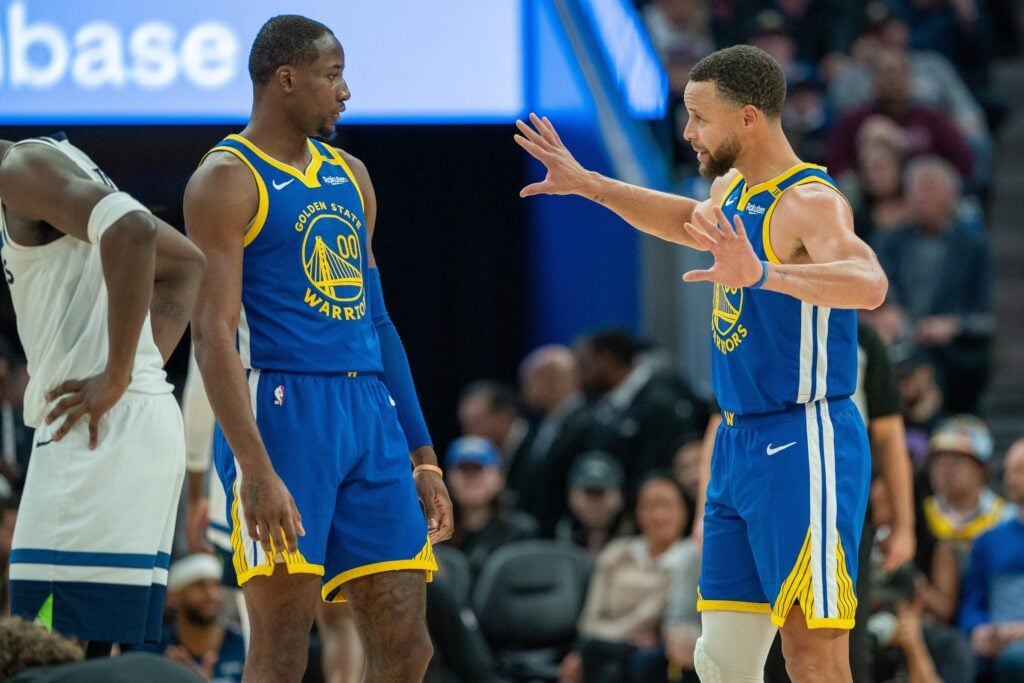SAN FRANCISCO — Golden State sits stuck in the middle of the West. The team that many projected as a top-four contender has stumbled to a 10-10 record and already trails the Houston Rockets by four games. The loss to a short-handed Rockets team at the Chase Center cut deeper than usual because it exposed the Warriors‘ average reality. Houston played without Kevin Durant and Tari Eason yet still outworked Golden State in a 104-100 win that felt like a culture blow. The Warriors must confront a simple truth: their small-ball identity no longer bends games. The league has grown bigger, faster and more physical, and Golden State must evolve or get left behind. That shift means difficult roster choices loom.
The Warriors Are Set To Make Tough Decision As Average Reality Sets In
Injuries, Decline and a Shrinking Margin

Steph Curry continues to play elite basketball, but he cannot anchor the offense every night anymore. Jonathan Kuminga’s injury cracked open the roster’s structural issues, revealing a bench short on size and consistency. Golden State has won once in its last five games, and Curry’s quad contusion in Wednesday’s loss adds pressure. The fast start masked flaws that now define their season. The Warriors are faced with the reality that they are an average team. A roster too small, too dependent on Curry and unable to match the athleticism of stronger Western teams.
Why Size Now Determines Their Ceiling
The small-ball era once allowed Golden State to dictate pace. Teams now punish them on the glass and at the rim. Opponents attack mismatches relentlessly. The Warriors need players who can switch, rebound and score without constant scheme help. Curry needs support that can withstand long seasons and nightly physical battles. The front office sees the crossroads clearly. Golden State either recalibrates its roster or watches another season drift from contention.
The Trade Table and the Players on It
The most urgent decision concerns whether to move Kuminga, Brandin Podziemski and Buddy Hield. Kuminga averages 13.8 points, 6.6 rebounds and 2.8 assists. He started the season embracing a cleaner role next to Jimmy Butler. He rebounded well, cut with purpose and passed willingly. Turnovers and defensive lapses then pushed him back to the bench, and “scapegoat” has already floated inside the building. His two-year, $48.5 million deal gives the team options, but the mood suggests tension. Podziemski and Hield remain movable at $11.5 million and $9.2 million. Packaging them with Kuminga may be the only direct route to upgrading size and scoring. That path also forces Golden State to abandon its long-held reluctance to trade young players. They refused to include Podziemski in a deal for Lauri Markkanen. If they want Markkanen now—or even someone like Michael Porter Jr.—they must confront their internal hesitation.
Draft Capital, the Post-Curry Era and Strategic Pressure
Future draft picks matter more than ever. The franchise approaches the post-Curry era with no clear successor. Any aggressive move must balance immediate needs with long-term survival. Some within the organization believe a controlled reset could create a healthier runway after Curry retires. Others argue that maximizing his final years should take priority. Each scenario carries risk, but standing still carries the greatest risk of all in a Western Conference that has grown stronger each season.
© David Gonzales-Imagn Images
The post The Warriors Are Set To Make Tough Decision As Reality Sets In appeared first on Last Word On Basketball.
